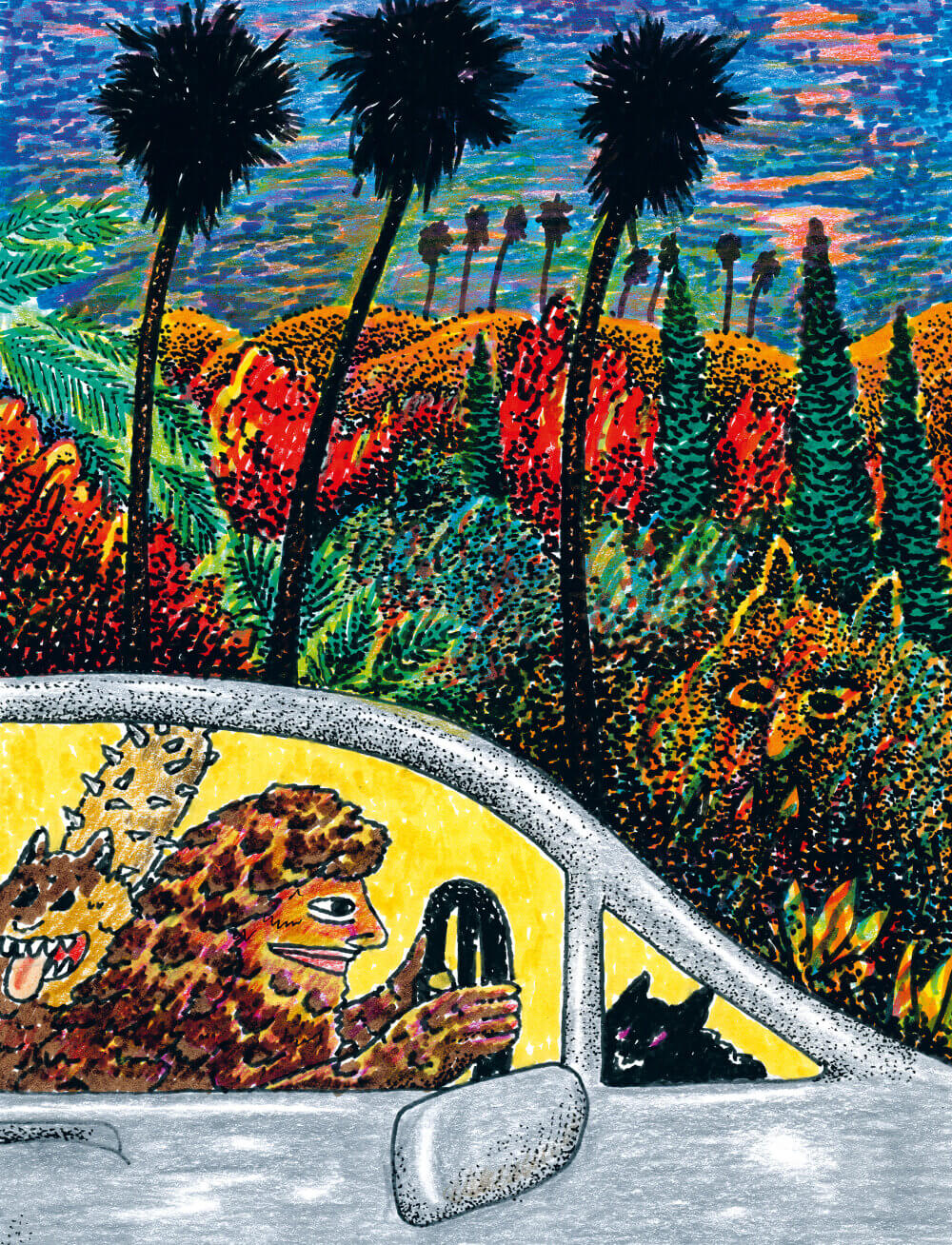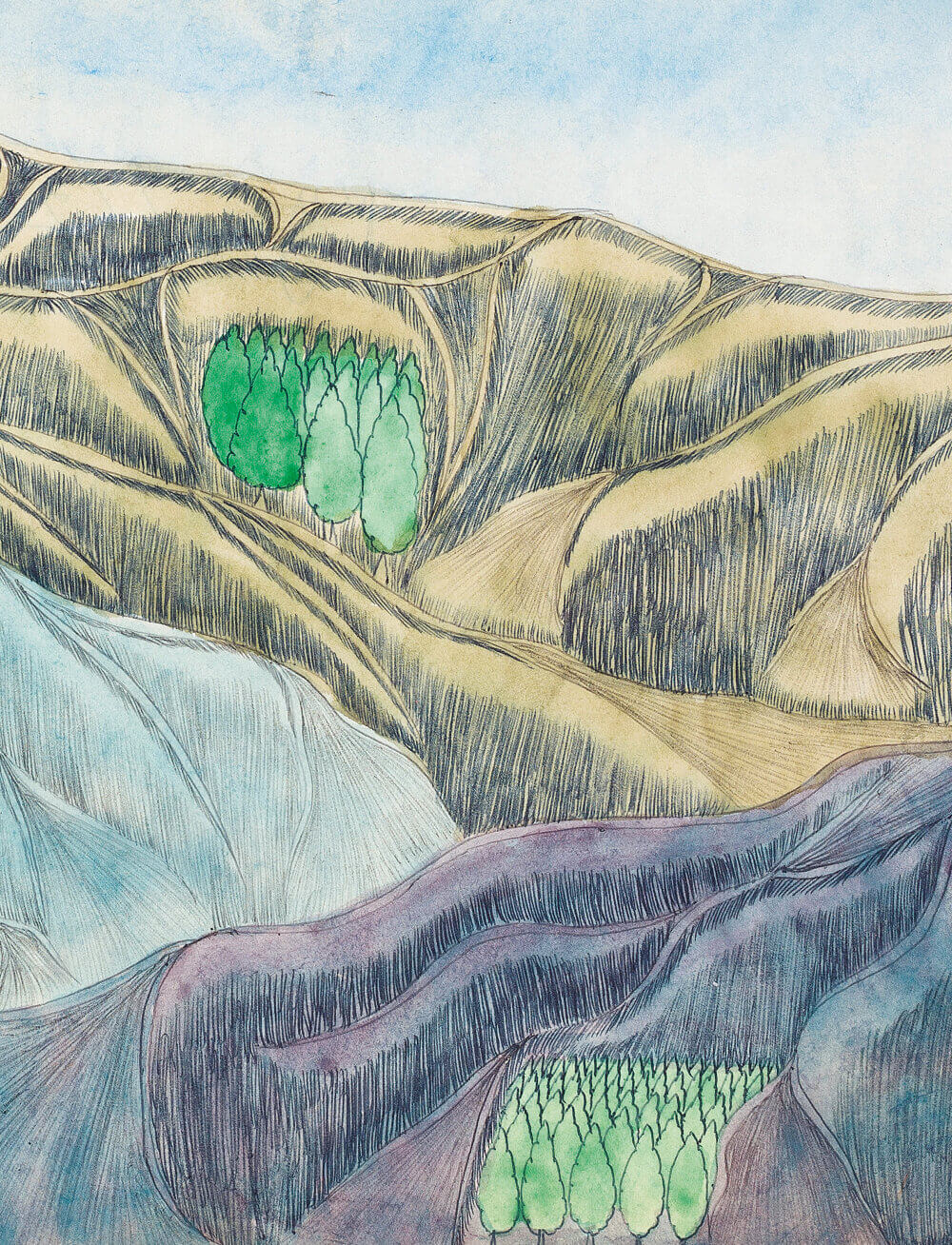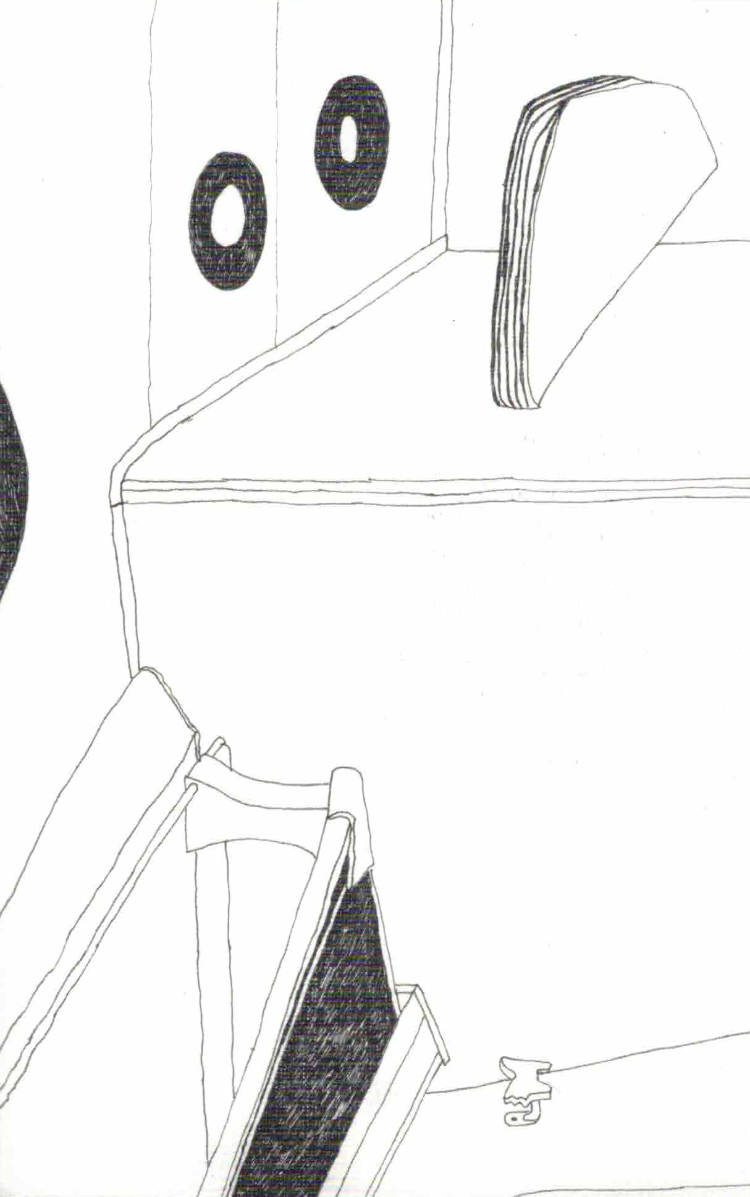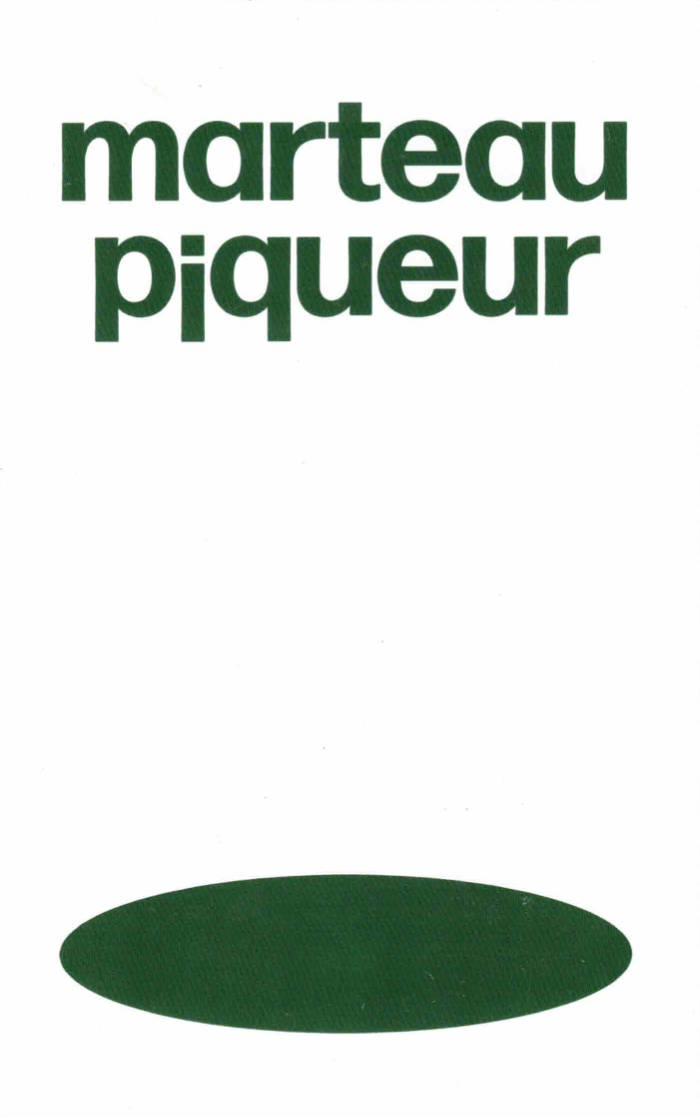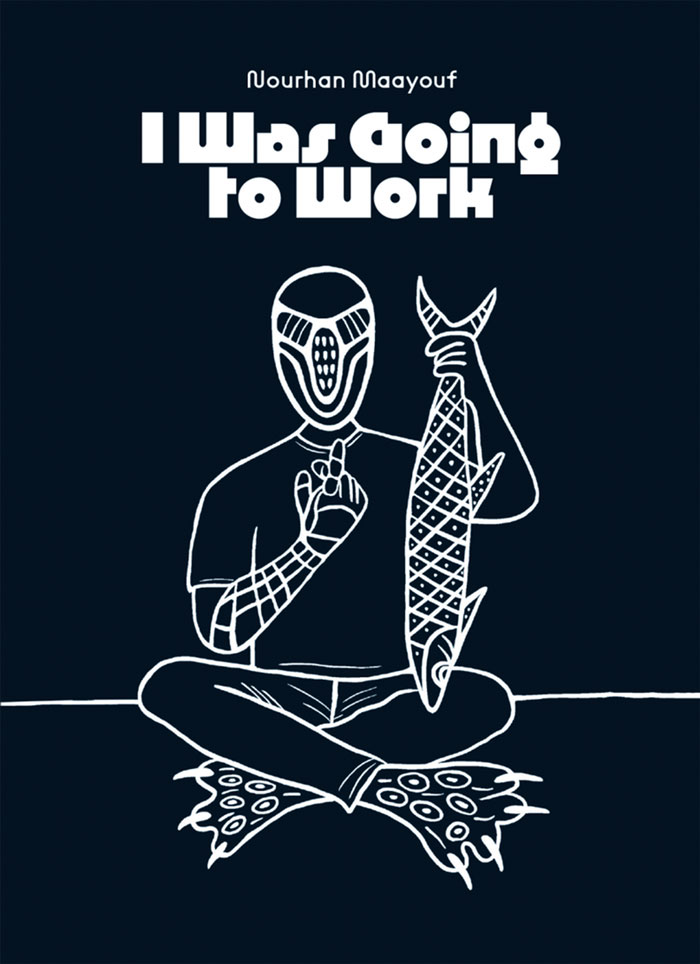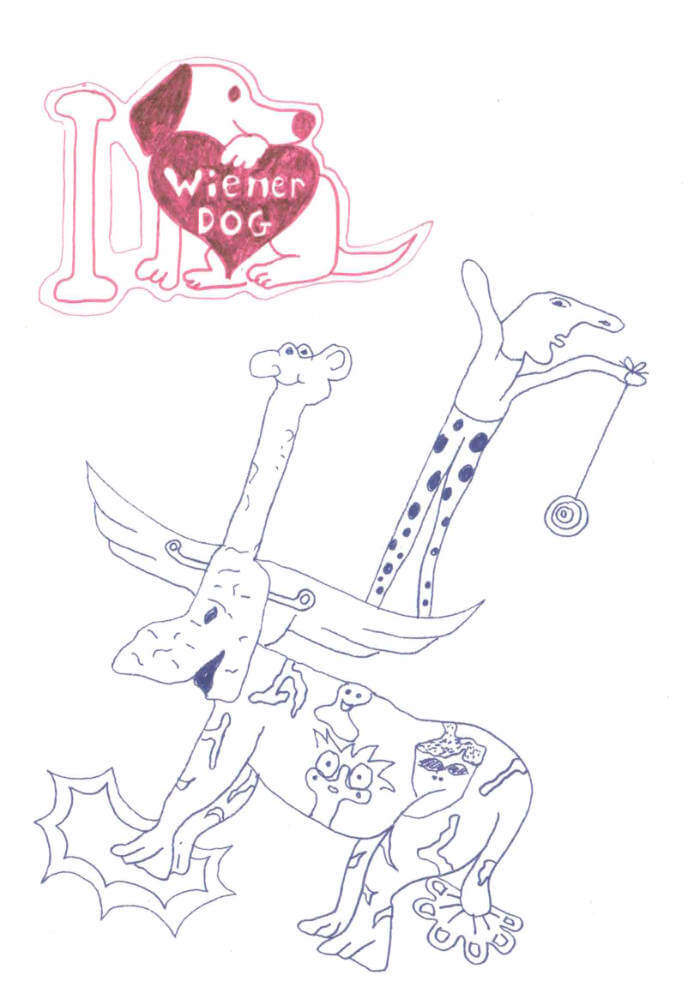
I Love Wiener Dog
A series of “Bad Paintings” by the Geneva-based artist.
White noise escapes from the 3rd floor of an opulent building located in the Eaux-Vives district. In an apartment, converted into a laboratory, hum a whole bunch of complicated machines linked together by a tangle of multicolored electrical wires. In the middle of all this mess, wrapped in transparent plastic sheets, a new experience will take place in a few moments.
Indeed, for the first time in history, a team of researchers will be able to precisely decode the creative process of an artist. Plunged into an artificial coma, the Genevan painter Josse Bailly wears a sort of motorcycle helmet, from which colorful cables spring. At the end of the test, Bailly's abundant pictorial practice will no longer have any secrets for the scientists present. The mechanism of his artistic frenzy, this true fury to paint, will be translated in an intelligible and logical manner.
Suddenly, a crackling sound is heard. Eyes rolling back, Bailly suddenly sits up square on the massage table transformed into an electric chair. Foaming at the mouth, he chants a series of names of old rock groups from the 70s. Sparks come out of the artist's blackened nostrils. His head looks like it's going to explode any minute. The screens light up in the smoke. Words scroll continuously on the monitors: "The beanbag chair", "Harvard beets", "I love wiener dog".
The pellets go off, putting an end to the strange scene which is more reminiscent of a planned execution than a scientific study. An expression of perplexity freezes on the stunned faces of the team of researchers. In a heavy silence where there is a smell of scorching, a young assistant risks slipping in a confused voice: "I think he likes to illustrate wiener dogs because he finds them cute and it's cool to draw them."

